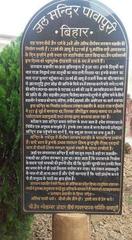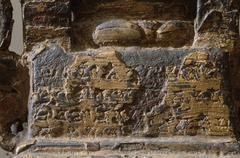Barauni Refinery Visiting Guide: Bihar, India
Date: 04/07/2025
Introduction: Barauni Refinery’s History and Significance
Barauni Refinery, located in Begusarai district, Bihar, is a monumental pillar of India’s industrial heritage and a catalyst for regional economic growth. Commissioned in 1964 through a collaborative effort between the Government of India, the Soviet Union, and Romania, the refinery was envisioned by Bihar’s first Chief Minister, Shri Krishna Sinha, to drive industrialization in Eastern India. From its humble beginnings with a 1 million tonnes per annum (MTPA) capacity, Barauni Refinery has transformed into a major energy hub, processing over 6 MTPA, with expansion plans targeting 9 MTPA by late 2025. This evolution reflects India’s commitment to energy security, technological advancement, and environmental stewardship.
Barauni Refinery not only fuels Bihar and neighboring regions but also produces Bharat Stage VI (BS-VI) compliant fuels and innovative petrochemical products like polypropylene, underscoring its national importance. While primarily a high-security operational site, the refinery periodically welcomes educational and professional groups for guided tours—offering rare insights into cutting-edge refining processes and sustainability initiatives. Its proximity to cultural sites such as Patna and natural attractions like Kanwar Lake Bird Sanctuary makes Barauni an excellent base for industrial and heritage tourism.
This guide offers in-depth information on Barauni Refinery’s history, technological milestones, visitor protocols, practical travel tips, and nearby attractions, ensuring a comprehensive resource for industrial tourism enthusiasts, students, and curious travelers. For further details and official updates, refer to Indian Oil Corporation’s resources (kemicalinfo.com, en.bharatpedia.org, angelone.in).
Table of Contents
- Introduction
- Historical Background and Industrial Significance
- Visitor Information
- Nearby Attractions
- Frequently Asked Questions (FAQs)
- Visuals and Media
- Conclusion
- References
Historical Background and Industrial Significance
Origins and Vision
In the late 1950s, Bihar’s first Chief Minister, Shri Krishna Sinha, championed the establishment of Barauni Refinery as a driver for regional economic progress. Realized with strategic support from the Soviet Union and technical contributions from Romania, the refinery was commissioned in July 1964 at a cost of Rs. 49.4 crores—becoming India’s second oil refinery and a landmark in the nation’s industrialization (kemicalinfo.com, en.bharatpedia.org).
Evolution and Expansion
- 1969: Capacity expanded to 3 MTPA.
- Early 2000s: Upgraded to 6.1 MTPA.
- 2025 (Planned): Expansion to 9 MTPA, backed by a ₹16,000 crore (approx. $1.9 billion) investment (angelone.in).
Technological advancements include the installation of Catalytic Reformer Units, Residue Fluidized Catalytic Cracker (RFCC), Diesel Hydro Treating (DHDT), and Sulphur Recovery Units (SRU). The refinery now produces BS-VI compliant fuels, matching global emission standards (nsenergybusiness.com).
Economic and Strategic Impact
- Regional Economic Driver: For more than 60 years, Barauni Refinery has generated thousands of jobs and supported ancillary industries, including the revival of the Barauni Fertilizer Plant.
- National Energy Security: Supplies a range of petroleum products to Eastern and Northern India, and soon, polypropylene for the burgeoning petrochemical sector (angelone.in).
- Technological and Environmental Leadership: Recognized for operational excellence and eco-friendly practices, the refinery implements advanced emission controls and has won multiple green awards (ten.com).
- Strategic Collaborations: Expansion projects involve global engineering leaders like Larsen & Toubro, ABB Power Grid, Toyo Engineering India, and Technip Energies (nsenergybusiness.com).
Visitor Information
Visiting Hours and Entry
Barauni Refinery is a high-security operational facility. General public access is restricted; educational and professional visits are permitted only with prior official approval from Indian Oil Corporation (IOC).
- Visiting Hours: Monday to Friday, 9:00 AM to 5:00 PM, by appointment only.
- Entry: No commercial tickets. All visitors must submit a formal application weeks in advance and receive written approval.
- ID and Documents: Carry valid government-issued photo ID and approval/invitation letters.
Tickets and Procedures
There are no ticket sales. Entry is via temporary passes issued to pre-approved individuals or groups. All visitors undergo security checks at the gate.
Guided Tours and Educational Visits
Guided tours are primarily offered to educational institutions and professional groups. Typical tour features:
- Introductory Briefing: Overview of IOCL, refinery history, and safety instructions.
- Process Areas: Supervised visits to key units like the Atmospheric Vacuum and Distillation Unit, Catalytic Reforming Unit (observation from safe zones).
- Polypropylene Plant: Insight into petrochemical production.
- Effluent Treatment: Understanding of environmental initiatives.
- Fire and Safety: Demonstrations of emergency response and firefighting equipment.
Photography: Prohibited inside plant areas unless specifically authorized.
Booking a Visit
Contact IOCL’s public relations or training department well in advance to request a visit. Approval is subject to operational schedules and security protocols.
Accommodation
No hotels exist within the refinery or township. Visitors typically stay in Begusarai (10 km away), which offers a range of hotels and guesthouses. Advance booking is recommended.
Facilities and Amenities
Designated guest areas provide restrooms and, for official visits, refreshments. Medical and first-aid facilities are available on site.
Accessibility
Due to industrial terrain, accessibility is limited for visitors with mobility challenges; advance notification is advised.
Safety Protocols
All visitors must attend a mandatory safety induction, which covers:
- Personal Protective Equipment (PPE): Hard hats, goggles, coveralls, gloves, and safety shoes (provided on site).
- Behavioral Guidelines: No smoking, eating, or drinking in process areas. Strict adherence to marked pathways and guide instructions.
- Emergency Procedures: Evacuation protocols, assembly points, and alarm systems.
The refinery maintains a dedicated fire and safety department, conducts regular drills, and complies with Bharat Stage VI emission standards.
Health Note: Visitors with respiratory conditions should consult with hosts in advance.
Practical Travel Tips
-
Getting There:
- Rail: Barauni Junction is well connected to major cities; the refinery is a short drive from the station.
- Road: Accessible via National Highway 31; taxis and auto-rickshaws are available.
- Air: Nearest airports: Patna (120 km) and Darbhanga (110 km) with onward road transport.
-
Best Time to Visit: October to March (pleasant weather).
-
Food: Meals are not provided for casual visitors. Official visits may include refreshments. Explore Bihari cuisine in Begusarai.
-
Weather:
- Winters (Nov–Mar): Cool and comfortable.
- Summers (Apr–Jun): Very hot; visits not recommended.
- Monsoon (Jul–Sep): Heavy rain may disrupt travel.
-
Language: Hindi is widely spoken; English used in official contexts.
-
Connectivity: Mobile coverage is good except in restricted plant zones.
Nearby Attractions
- Barauni Refinery Township: Noted for its green layout and planned amenities.
- Rajendra Setu: Iconic bridge over the Ganges.
- Simaria Ghat: Revered riverfront, especially during Chhath Puja.
- Kanwar Lake Bird Sanctuary: A haven for migratory birds.
- Cultural Sites in Begusarai and Patna: Including Kali Mandir, Patna Museum, Golghar, and Vaishali’s Buddhist ruins.
Frequently Asked Questions (FAQs)
Q1: Can the general public visit Barauni Refinery?
A1: No. Only pre-approved educational and official groups may visit by prior arrangement.
Q2: What are the visiting hours?
A2: Monday–Friday, 9:00 AM–5:00 PM, subject to appointment and refinery schedules.
Q3: Are guided tours available?
A3: Yes, for educational/professional groups through prior IOCL approval.
Q4: Is photography permitted?
A4: Generally not allowed inside plant areas.
Q5: How do I arrange a visit?
A5: Contact IOCL’s public relations office with a formal written request.
Visuals and Media
Caption: Aerial view of Barauni Refinery’s expansive campus.
Caption: Main entrance of Barauni Refinery in Begusarai.
Visit official IOC websites or local tourism portals for additional images and virtual tours.
Conclusion
Barauni Refinery stands as a beacon of India’s industrial and technological evolution, embodying the country’s strides in energy security, economic upliftment, and environmental stewardship. Its ongoing expansion and modernization projects illustrate a commitment to sustainable growth and reduced import dependence. While public access is limited, guided educational and professional tours offer rare opportunities to witness India’s refining expertise firsthand.
Plan your visit by coordinating with IOCL, respecting all safety protocols, and exploring the cultural richness of Begusarai and nearby regions. For the latest information, always consult official resources and local updates.
For more industrial heritage guides and real-time travel tips, download the Audiala app and follow us on social media.
References
- Barauni Refinery Visiting Guide: History, Significance, and Visitor Information, 2025, kemicalinfo.com (kemicalinfo.com)
- Barauni Refinery Wikipedia Entry, 2025, en.bharatpedia.org (en.bharatpedia.org)
- IOC to Invest in Bihar Refinery Expansion and Gas Projects, 2025, angelone.in (angelone.in)
- Barauni Oil Refinery Expansion Project, 2025, nsenergybusiness.com (nsenergybusiness.com)
- Technip Energies Awarded Contract for Indian Oil Corporation Upgrade, 2025, ten.com (ten.com)


